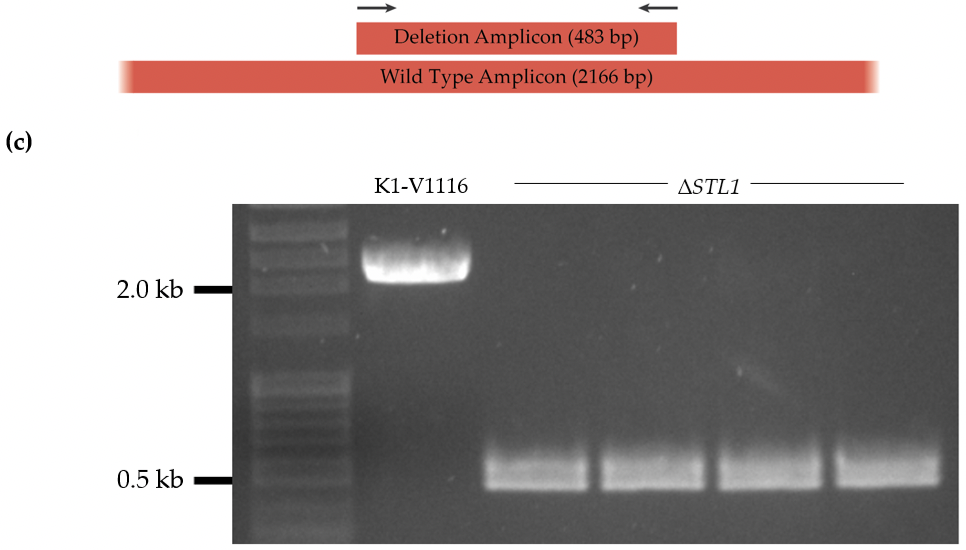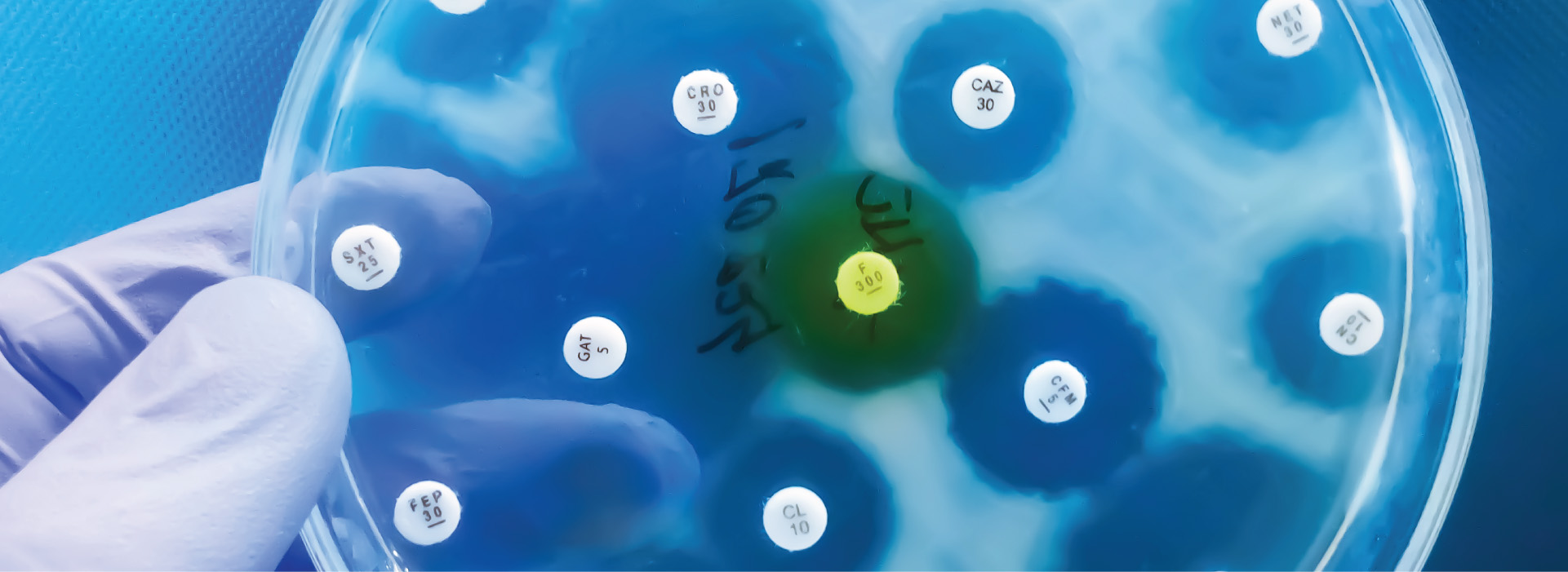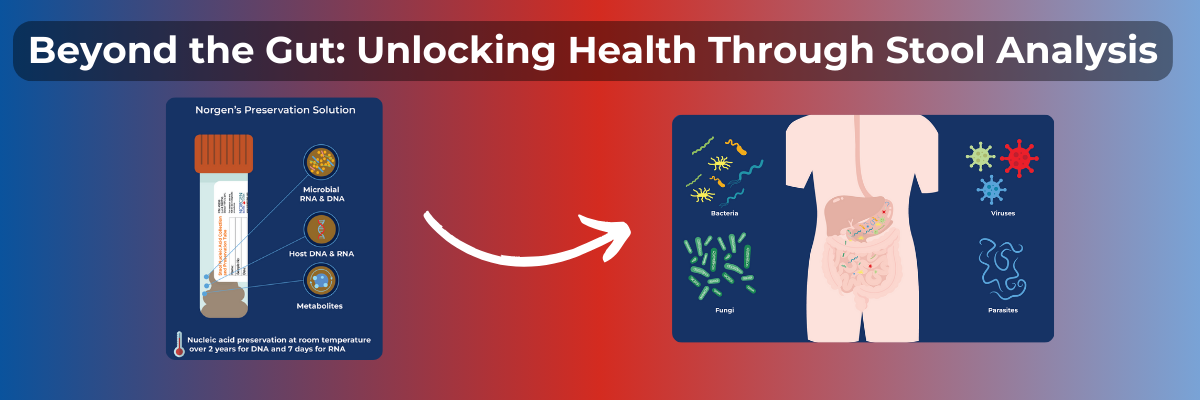
Glycerol uptake in ice wine fermentation through the use of CRISPR-Cas9 genome editing
Icewine is a signature sweet dessert wine that is widely distributed in cold regions; it is produced through the fermentation of juice from pressed frozen grapes. The process of fermenting frozen grapes is complex, owing to its association with highly concentrated solutes such as sugars, organic acids, and nitrogenous compounds. Jared et al. of Brock University in St. Catharines, Ontario investigated the role of Stl1p—a plasma membrane H+/glycerol symporter—in icewine fermentation. As part of their study, they developed a rapid single plasmid CRISPR-Cas9-based genome editing method to create a strain of the common icewine yeast, S. cerevisiae K1-V1116, that lacks STL1 (Fig 1)(1). The S. cerevisiae glycerol active transporter Stl1p increases the production of glycerol. This gene is activated under conditions of hyperosmotic stress and high temperatures (2). The purification kit used to purify the K1-V1116 was the Fungi/Yeast Genomic DNA Isolation Kit (Cat. #27300, Norgen Biotek Corp, Ontario, Canada). PCR-amplified DNA was purified using the QIAquick Gel Extraction Kit (QIAGEN, Hilden, Germany). DNA was subsequently quantified using a NanoDrop Lite Spectrophotometer (Thermo Fisher Scientific, Waltham, MA, USA). The reduced fermentation process, ΔSTL1 strain, shows increased levels of glycerol and acetic acid production per gram of sugar consumed, which suggests that Stl1p contributes to the osmotolerance of K1-V116 during the fermentation process (Fig 2). These results strongly suggest that Stl1p plays a crucial role in maintaining internal glycerol levels during the hyperosmotic stress conditions of icewine fermentation.


Figure 1. Schematic of STL1 and mechanism of CRISPR-Cas9 genome edit. CRISPR-Cas9 cleaves at the depicted location, resulting in homology directed repair with the ∆STL1 donor DNA (a). PCR genotype scheme used to validate the integration (b). Gel image of STL1 genotype of K1-V1116 in lane 2 and K1-V1116 ΔSTL1 transformants in lanes 3 to 6 (c).
NORBLOG
Want to hear more from Norgen?
Join over 10,000 scientists, bioinformaticians, and researchers who receive our exclusive deals, industry updates, and more, directly to their inbox.
For a limited time, subscribe and SAVE 10% on your next purchase!
SIGN UP

Figure 2: Average glycerol produced (a) and average acetic acid produced (b) over the time course of the fermentation. Average glycerol produced (c) and average acetic acid produced (d) versus sugar consumed over the course of the fermentation. Includes K1-V1116 ∆STL1 (●) and K1-V1116 (○). Values are the averages of triplicate fermentations, with each sample tested in duplicate for metabolite analysis.
To learn more about DNA isolation in Icewine fermentation yeast, read the full article at: https://www.mdpi.com/2311-5637/5/4/93/htm
-
Muysson, J., Miller, L., Allie, R., & Inglis, D. L. (2019). The Use of CRISPR-Cas9 Genome Editing to Determine the Importance of Glycerol Uptake in Wine Yeast During Icewine Fermentation. Fermentation, 5(4), 93.
-
Tulha, J., Lima, A., Lucas, C., & Ferreira, C. (2010). Saccharomyces cerevisiae glycerol/H+ symporter Stl1p is essential for cold/near-freeze and freeze stress adaptation. A simple recipe with high biotechnological potential is given. Microbial cell factories, 9(1), 82.
- Muysson, J., Miller, L., Allie, R., & Inglis, D. L. (2019). The Use of CRISPR-Cas9 Genome Editing to Determine the Importance of Glycerol Uptake in Wine Yeast During Icewine Fermentation. Fermentation, 5(4), 93.
- Tulha, J., Lima, A., Lucas, C., & Ferreira, C. (2010). Saccharomyces cerevisiae glycerol/H+ symporter Stl1p is essential for cold/near-freeze and freeze stress adaptation. A simple recipe with high biotechnological potential is given. Microbial cell factories, 9(1), 82.




